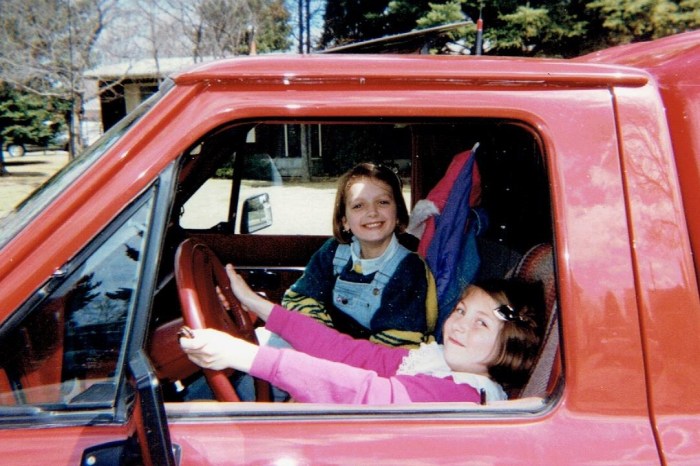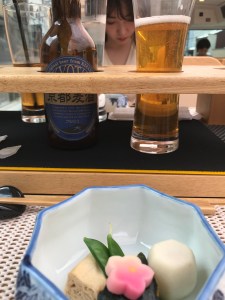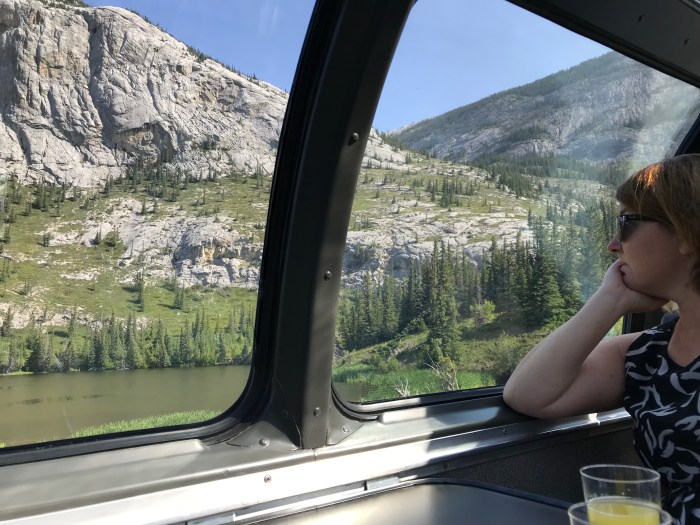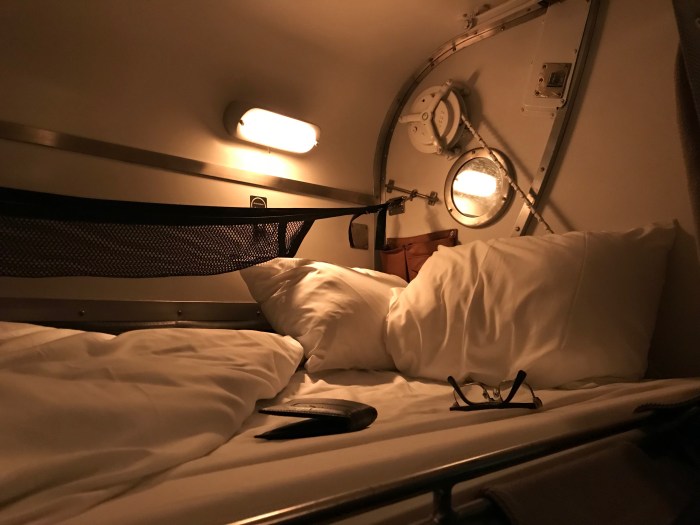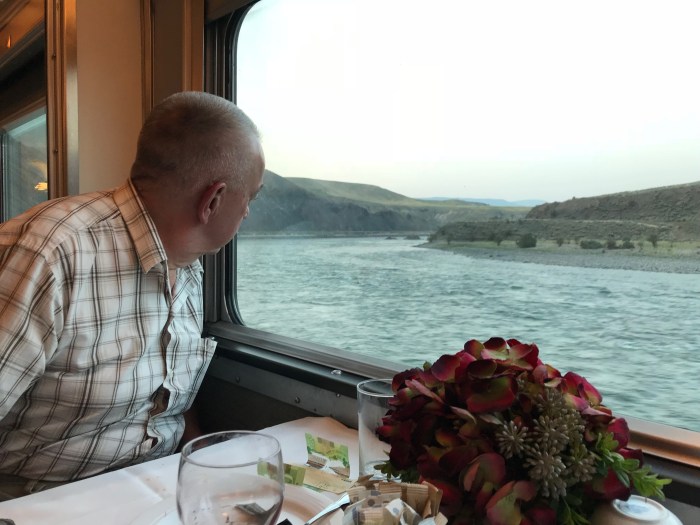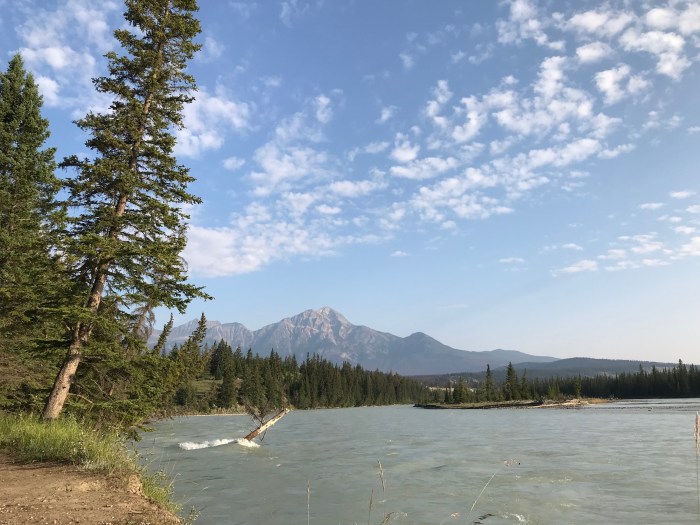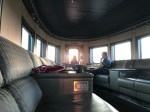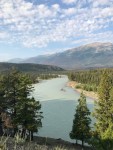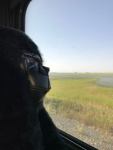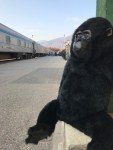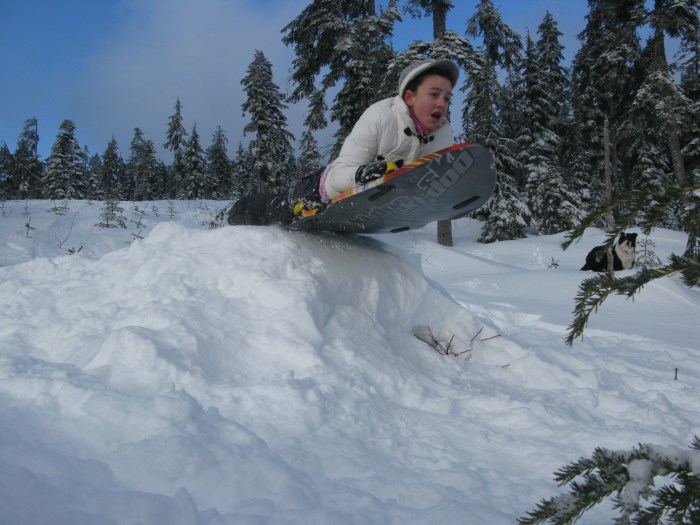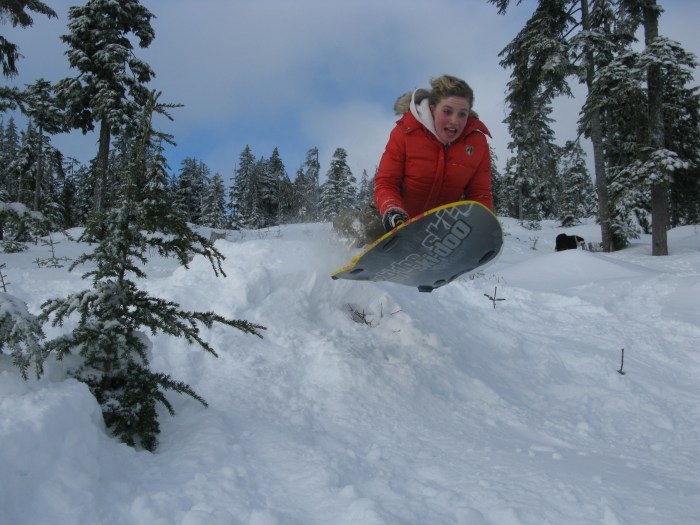Cold play
The Tetrahedron Outdoor Club ensures a warm welcome for visitors
Reached by ferry or floatplane, the Sunshine Coast, north by northwest from Vancouver on Canada’s west coast, is the kind of place people visit to get away from it all. The Tetrahedron is the kind of place Sunshine Coasters go to get away from it all.
As backyards go, the Tetrahedron tends to be on the large side. Six thousand hectares of mountains, lakes, streams, wetlands and forest make this Class A provincial park the perfect place for backcountry enthusiasts to explore.
It also makes the Tet, as it’s fondly known, an immensely challenging place to maintain for visitors. Charged with that formidable task is the Tetrahedron Outdoor Club, a hugely dedicated volunteer organization committed to maintaining the park’s four rustic cabins and the 25-kilometre trail network connecting those cabins.
“B.C. Parks owns the cabins and it’s their provincial park,” explains club president, Gerry Marcotte. “We are the stewards of the park and a have great working relationship with B.C. Parks, which goes a long way to keeping these cabins and trails up to date.”
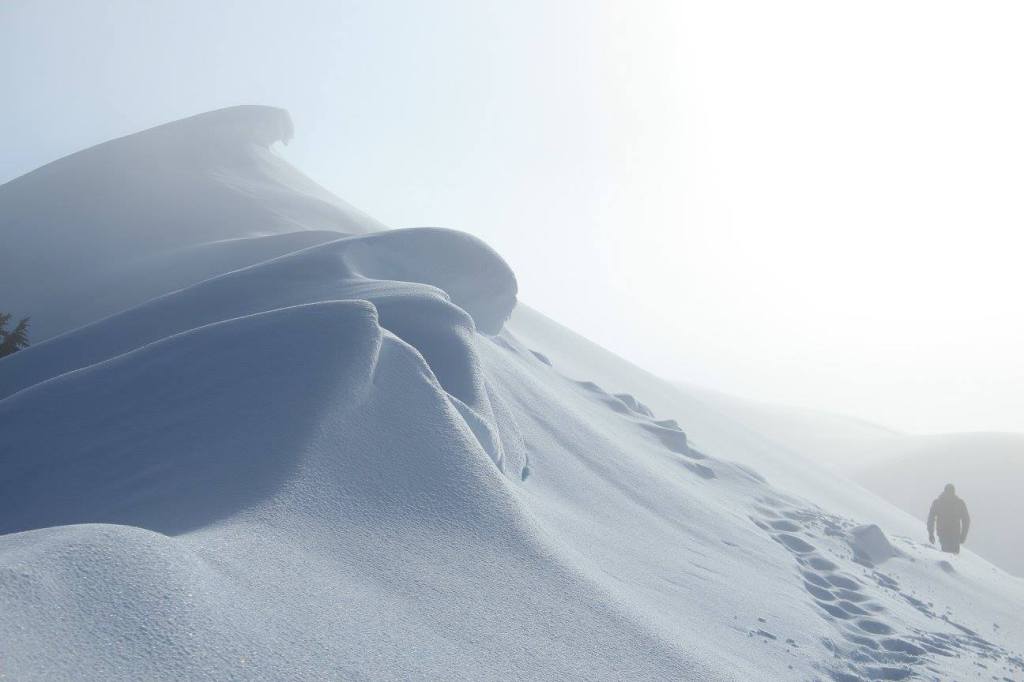
The latest major project keeping the club’s volunteers busy has been the installation of a three-ton bridge spanning Steele Creek. Lowered by helicopter and installed by club members last month, the bridge cost about $20,000 – $12,000 of which was partially funded by a grant from the Sunshine Coast Community Forest Legacy Fund.
It would have cost more but for the donations of businesses – structural engineering, welders and lumber milling. The mix of grants, donations, partnerships and resourceful volunteers continues from a blueprint established more than 35 years ago.
In the mid-1980s, amid an economic depression, a group of backcountry enthusiasts united to mobilize more than 200 volunteers, 45 businesses, schools, community groups and several levels of government: their goal, to build cabins linked by a trail network.
The Tetrahedron Ski Club, as it was then known, secured more than $150,000 in federal funding and another $20,000 from the province, to build the cabins at Sechelt airport. The cabins would then be disassembled and flown by helicopter to be reassembled on site.
Forestry company, Canfor, and the Sunshine Coast Regional District donated timber, Sechelt Creek Contracting provided logging service, Airspan donated some airtime, Gibsons Building Supplies provided crane trucks and the Outdoor Recreation Council pitched in with chainsaws.

An army of volunteers mobilized to clear trails while 18 people worked on the cabins, gaining valuable carpentry skills and learning about surveying and wilderness first aid. By the time the cabins opened to the public in 1987, the club had raised more than $300,000 for the project. Perhaps more remarkably, a single great idea had united governments, businesses and local volunteers.
So, what motivated such efforts back then and what continues to drive the club’s volunteers now?
“There are a lot of people in the Tet for pure recreation,” says long-time club member, Melissa Rayfield. “I think the difference with volunteering is that it becomes purposeful recreation. I think any volunteer would feel the same way, it’s part of their social life, part of pleasure and the fulfilment of getting something done.”
Melissa’s husband, Danny Fleischhacker, agrees, adding that the solitude and the elements amid the Tet’s wide-open spaces are hard to resist, especially in winter.
“Getting out into the backyard, being out in nature there’s a sense of throttling back, tapping the brakes and going slow, but looking around,” says Danny, who admits that he also likes to go fast. “I really love skinning in a blizzard with the wind blowing at me. (Skinning is the practice of sticking synthetic skins to skis, climbing a trail, then skiing down. Danny and fellow club-member, Sam Preston, are particularly fond of exploring ski terrain deep in the park and immortalizing perfect runs with names like “Heaven is a Halfpipe”.)
Melissa and Danny are stewards of McNair cabin, visiting about once a month for maintenance and monitoring. (Visitors are asked to clean up after themselves but that doesn’t always mean that they do.) Gerry and his wife Ellen steward Bachelor cabin. In between are Edwards and Steele cabins, each with their own stewards and the latter cabin being the highest, situated at the base of 5,114-foot Mount Steele.
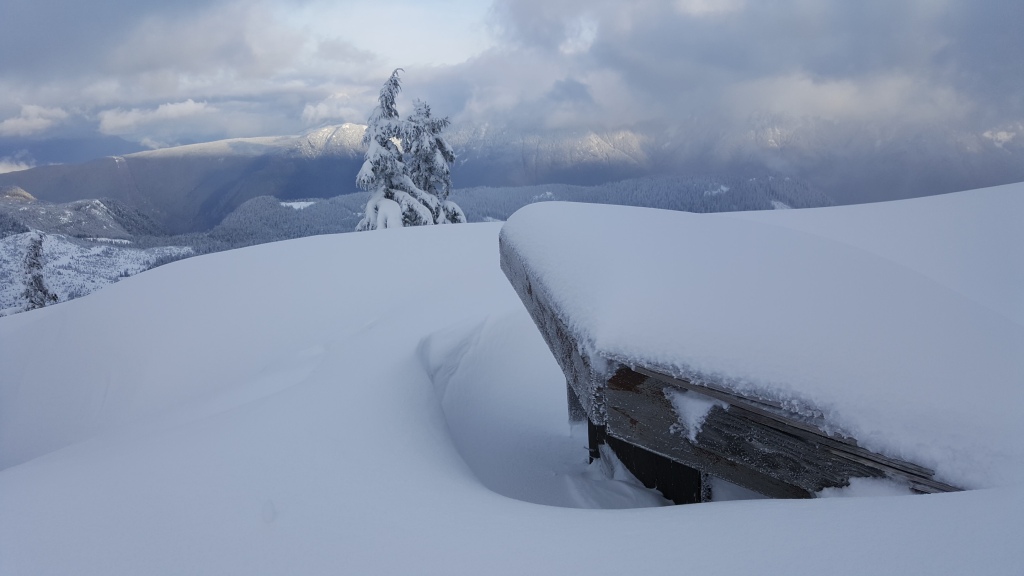
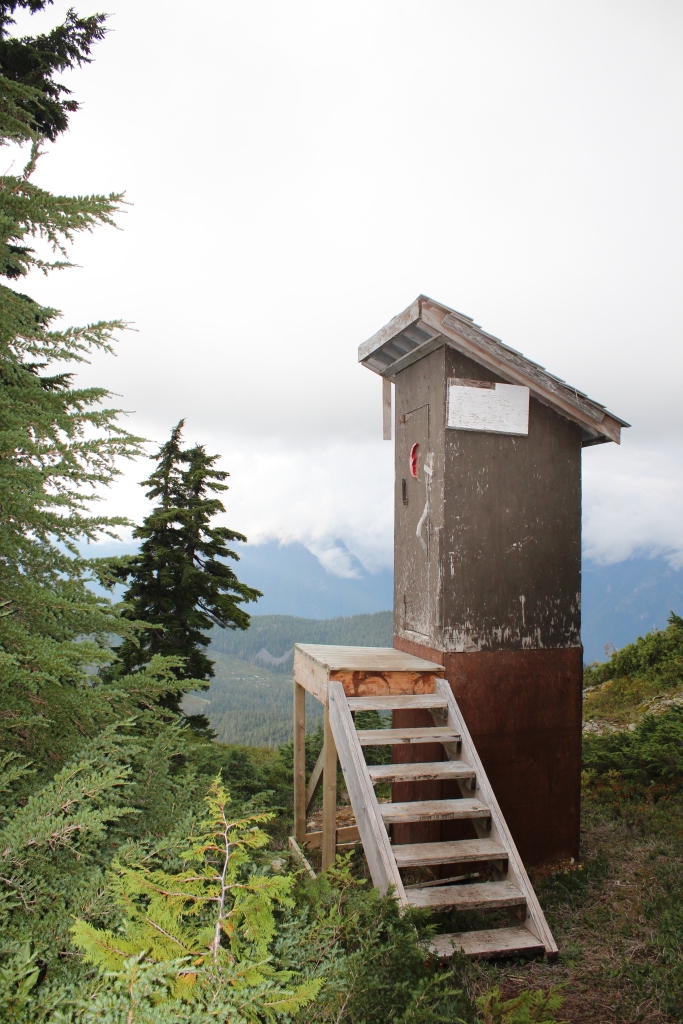
It’s not uncommon to have to dig your way into the Tetrahedron’s cabins and outhouses, especially on Mt. Steele.

The cabins accommodate 12 to 16 people, are first come, first serve, and are well equipped with mattresses in the attic, firewood in the basement, a kitchen counter and a sink. The wood stove usually has the place toasty warm within an hour.
Panther, Steele and Tetrahedron peaks loom over the park’s 10 lakes and some of the oldest trees in the country. Amabilis fir, mountain and western hemlock, yellow cedar and white pine can all be found here.
For Melissa and Danny, winter in the Tet means fun; summer means work. “It can take a herculean effort by a small number of people to accomplish some of the projects,” says Melissa. “Trail-clearing is never ending.”
(Veteran club member, George Smith, recently spearheaded a new trail to provide day-trippers with a beautiful new winter-touring option past Mayne Lake.)
Nor are the volunteers getting any younger.

“When you look at the group photos from the Steele Creek bridge project, you realize the average age of the volunteers is low-60s,” says Danny. “We need to bring down that average age, not that our volunteers aren’t uniquely capable – there are some extremely hard-working 70+ people. We all love the Tet and are very supportive of each other. There’s never a shortage of camaraderie.”
Funding is also a perennial concern for the club. Snow removal costs between $6,000 and $12,000 a year. Firewood is airlifted to the cabins at a cost of $18,000. Community members donate the wood, which is cut and split by club volunteers. (Visitors building winter bonfires outside of the cabins are a particular source of frustration for the club.) Then there’s cabin maintenance and major projects like the Steele Creek bridge. A bridge will soon be needed across Chapman Creek.

Cabin revenues of $10 to $15 a night help but the club’s major source of income is from the annual Banff Mountain Film Festival held at Elphinstone Secondary School in Gibsons. Tickets are on sale for the February 3 event, (see below for details) which is also a good opportunity to learn more about the club and consider volunteering. Otherwise, the best way to join is online at tetoutdoor.ca.
“We welcome everyone with open arms,” says Gerry. “We moved here in 2016 and were warmly welcomed and encouraged by the club and it still holds true today. The people we have come to know, the friends we’ve made – it’s absolutely awesome!”

Visiting the Tetrahedron
- Four-wheel drive and chains are essential for visiting the Tetrahedron during winter. For more information about conditions, visit the club’s Facebook page.
- For information about the park, visit bcparks.ca/explore/parkpgs/tetrahedron/
- There can be a significant avalanche risk in the park. Before heading out, visit www.avalanche.ca
Banff Mountain Film Festival tickets
Tickets for the Banff Mountain Film Festival, (February 3, 2023 at Elphinstone Secondary School) are available at:
- Alpha Adventures, Wilson Creek
- Elphi Cycles Gibsons and Sechelt outlets
- High Beam Dreams, Gibsons
- Trail Bay Source for Sports, Sechelt
Related stories: Men of Steele and Cabin Fever

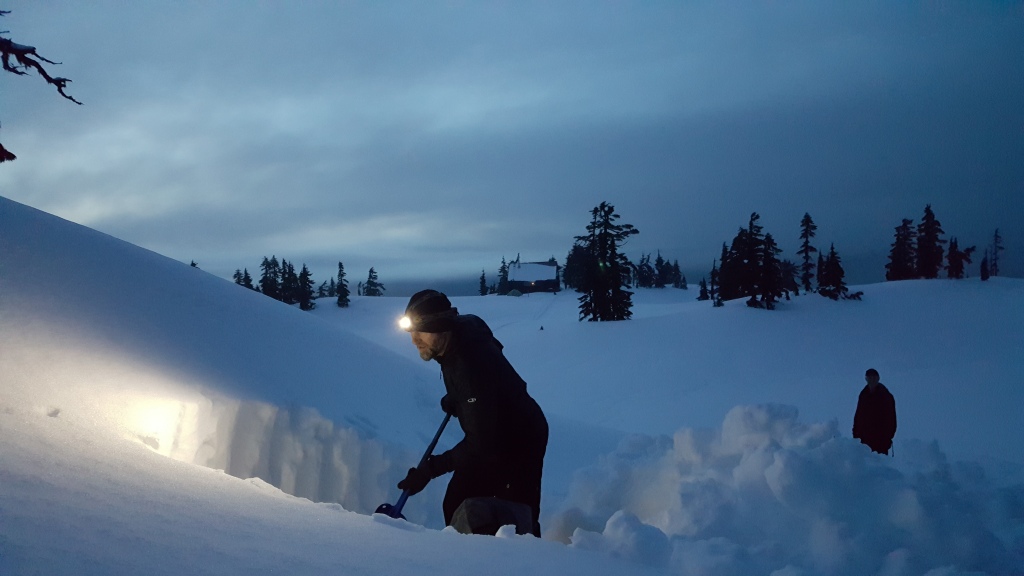







Tony Waiters and Canada’s first World Cup adventure
In 2006, players from Canada’s 1986 World Cup team reflected on their exploits in Mexico for a story I wrote in The Province. They were coached by Tony Waiters, who sadly passed away two years ago. Tony would have been thrilled to see the current men’s team qualify for the World Cup for only the second time in this country’s history. Tony was a talented player and coach, and exceptionally generous with his time, especially when it came to football. He moved to the Sunshine Coast in 2016 and spent many hours helping local coaches, including me. On the eve of the FIFA 2022 World Cup kicking off in Qatar, here’s a look back at Tony’s contributions to the sport and to Canada’s first appearance in the men’s tournament, as recalled by the players who were there.
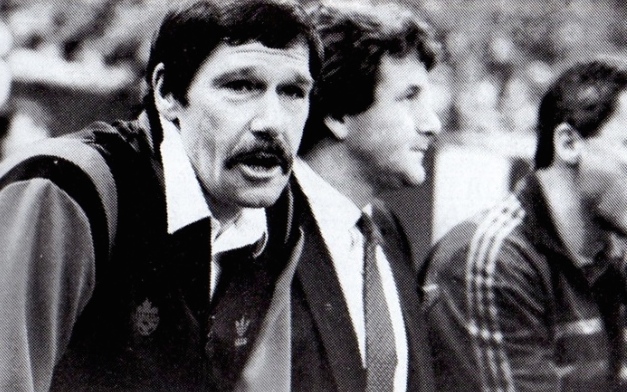
Tony Waiters in his element, coaching Canada in 1983. Photo courtesy Tony Waiters
For Tony Waiters, the 1986 World Cup marked the culmination of a coaching career that’s unparalleled in Canadian soccer. A professional soccer goalie who played for England’s national team in the 1960s, Waiters coached England’s youth team to a European Championship title in 1973 before leading club side Plymouth Argyle to promotion in 1975.
In Canada, he coached the Vancouver Whitecaps to the Soccer Bowl NASL championship in 1979; led Canada’s men to the Olympic quarterfinals in 1984; and oversaw Canada’s qualification to and participation in Mexico ‘86. Waiters wrote numerous books on soccer coaching and developed World of Soccer, a company producing soccer equipment and other resources for coaches and soccer associations.
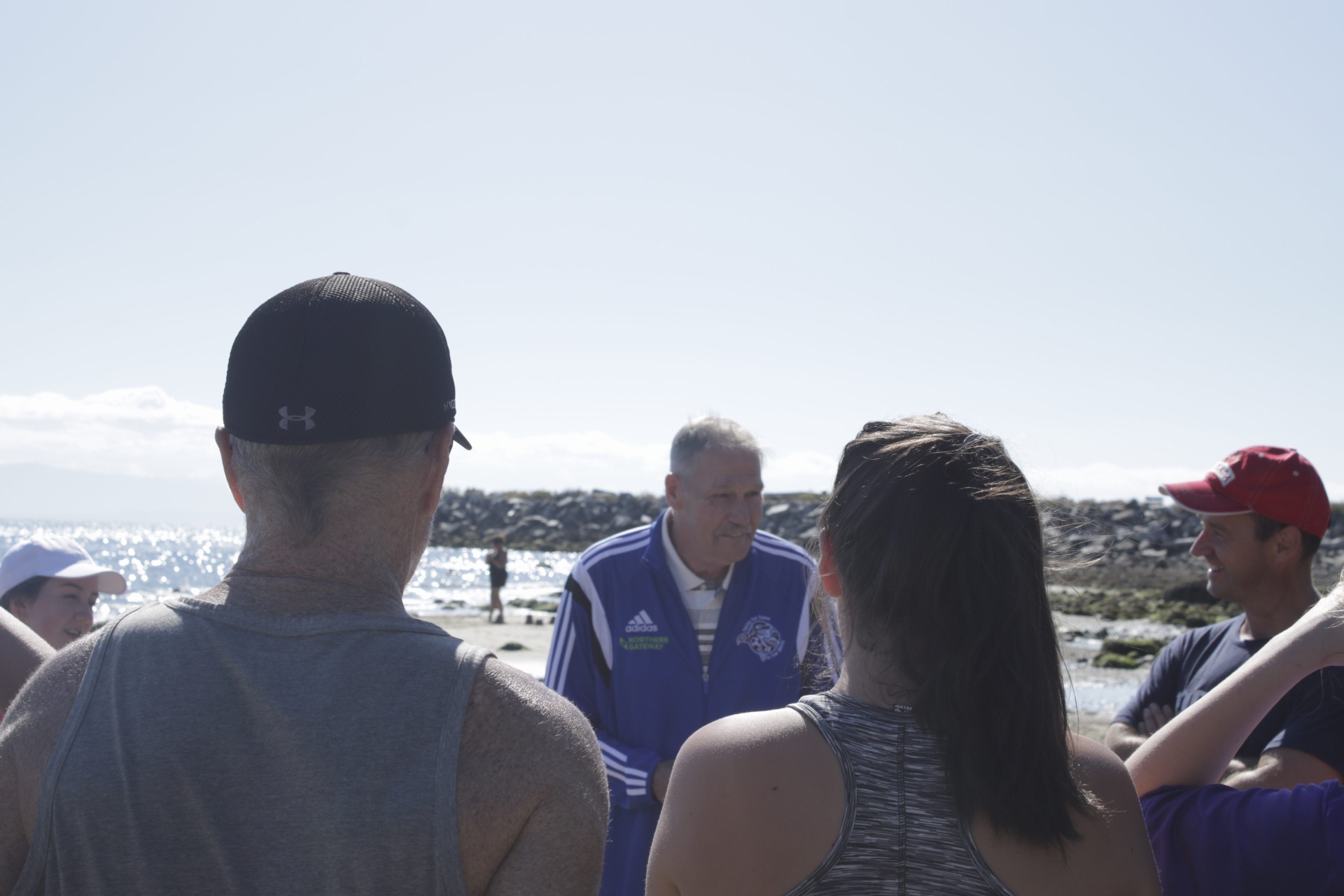
Tony Waiters pictured at Roberts Creek Beach in 2016, helping to coach the U18 girls’ rep team.
“Of all the teams at the 1986 World Cup, we were as fit, if not fitter than any of them,” recalled Waiters. “The commitment of the Canadians was incredible. My hope was that we wouldn’t get blown out of the water, that we wouldn’t embarrass ourselves,” said Waiters. “And we didn’t.”
Canada held France 0-0 until European Player of the Year, Jean-Pierre Papin, scored the winner with 10 minutes remaining. (France went on to beat Brazil in the quarterfinals but fell in the semis to West Germany.) Canada went on to lose to Russia and Hungary, both 2-0 defeats.
Tony Waiters in quotes
On coaching his son’s U13s team after coaching Canada at the FIFA World Cup.
“The parents were more impressed than the kids were.”
On the perils of World Cup qualifying … in Honduras.
“I actually put a ban on the team using the elevator in the hotel. Because during the previous qualification, they’d gone to the same hotel and five of the players got stuck in the elevator. On every floor was an armed guard, which is a bit intimidating.”
… and in Guatemala.
“The fans were marching around the hotel and chanting all night. We went for a morning run to the stadium, which was about a mile from the hotel. The stadium was full three hours before kickoff. We asked someone, what’s going on? And they said, they’re waiting for you.”
… and dealing with “Montezuma’s Revenge” in Mexico.
“When we got eliminated the bottom fell out of our world. When we got back to Vancouver the world fell out of our bottom.”
On coaching.
“I think you’ve got to believe in the players. And make them believe in themselves. You’ve got to encourage players and genuinely encourage them. Believe in them and believe in their potential. You’ve got to make every practice session interesting and fun. People love the game so you‘ve got to take advantage of that. Some coaches get so intense in what they’re doing, they take the fun out of the game.”
- Adapted from Coast Life magazine, Fall 2016
The greatest 79 minutes in Canadian men’s soccer
The following story first appeared in The Province in June 2006.
The narrow players’ tunnel at the Estadio Nou Camp, in Leon, Mexico, is not known for its ambience. In the summer it’s like an oven and soccer players have little choice but to rub shoulders with one another before they take to the pitch.
Yet members of Canada’s 1986 World Cup team have a hard time forgetting that tunnel: It was June 1, Canada’s opponents were France, the reigning European champions and pre-tournament favourites.
“I remember lining up in this dark tunnel next to the French players, and I remember thinking, ‘I know these guys, I watch them on TV every weekend,”‘ says Ian Bridge, who at the time was playing club soccer with Swiss side La Chaux de Fonds.
“Standing there and seeing that feared team… that was, for me, a little overwhelming,” recalls fellow defender David Norman.
Teammate Bob Lenarduzzi recalls looking down a line of French players led by midfield maestro Michel Platini and thinking, “Oh Jesus… “
For Norman at least, that tunnel was the scene of his “single greatest moment” in professional soccer. It might have been the single greatest moment for Canadian soccer itself. The 1986 tournament remains the only World Cup Canada has ever qualified for.
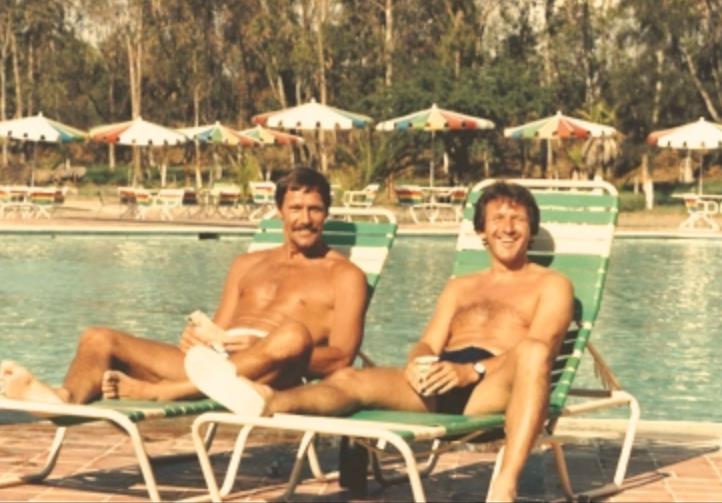
Tony Waiters with national team administrator, Les Wilson, relaxing at the 1986 World Cup. Photo courtesy Tony Waiters
Qualification had been clinched eight months earlier on Sept. 14, 1985, a cold, drizzly day in St. John’s, Nfld. Needing only a point, Canada got goals from Victoria’s George Pakos and Igor Vrablic of Waterloo, Ont. to clinch a dramatic 2-1 win over Honduras. Honduran players braved the cold, wearing tuques and gloves, while most of their travelling fans had mistakenly gone to Saint John, N.B., where they ended up watching the game in bars.
Bridge had to leave the game injured and couldn’t even bear to watch. “I listened to the reaction of the crowd while I was in the showers,” he laughs. “We were up till 2 a.m. having drinks with the mayor of St. John’s. “Qualifying for the World Cup, just knowing that we were going to play among the best teams in the world, that was like winning the World Cup for us.”
Coach Tony Waiters developed the core of a Canadian team that had taken Brazil to a quarter-final penalty shootout in the 1984 Olympics and thrust them into intensive training camps and tours to prepare for the World Cup.
Pitted against France, Hungary (which had beaten Brazil in a World Cup warmup months earlier) and the Soviet Union, Canada had drawn their own Group of Death. But on paper at least, it wasn’t expected to get any tougher than Game 1 versus France.
Paul Dolan, then 20, was given the nod in goal. He recalls enjoying the team’s role of underdog. “We weren’t expected to do anything and France was loaded with talent,” says Dolan. “I just felt that this was a great opportunity and I’m glad I looked at it that way because I felt how much fun it was.”
After his moment of truth in the tunnel, Norman relaxed, too. “When we ran out and got going it became just another game. It was just 11 vs. 11.” Watched by a television audience estimated at over one billion and buoyed by a sellout crowd of 36,000, Canada took the game to France.
“I don’t think they believed that we would play such a high-pressure game at altitude in the heat of the day,” says Bridge, who was marking future European Player of the Year Jean-Pierre Papin. “But we were naive enough to do that. We were an unknown quantity.”
As Canada began creating its own chances, French fans turned on their team with boos and whistles. “To hold the French would have been momentous in soccer, not just Canadian soccer,” says Norman, who still has the game on videotape but has yet to show it to his seven-year-old son. “We could have stunned the soccer world.”
It wasn’t to be. In the 79th minute substitute Yannick Stopyra connected on a long cross into the penalty box, heading the ball across Dolan’s goal to Papin, who finally escaped his marker for a simple tap-in.
“Paul Dolan, who had been brilliant, came out and was going for the cross,” recalls Lenarduzzi. “I assumed he was going to get it and stepped away. He missed it. I should have just headed it out for a corner but it was headed back across for Papin.”
Canada lost its other two games. The Soviet Union, which had thumped Hungary 6-0, took 59 minutes to break down Canada, eventually winning 2-0, the same scoreline Hungary recorded over Canada.
“I don’t have any regrets,” says Dolan. “I played in the World Cup and that was the pinnacle of my career.” Twenty years later, the ’86 team is barely mentioned on the Canadian Soccer Association’s website and players have never had a reunion.
Perhaps it’s about time.
Zoom, zoom!
On trails and roads, electric bikes are putting the “coast” in Sunshine Coast
Like everyone else on the Sunshine Coast, I live near a hill. For 20 years, I knew any ride in or out of Roberts Creek would require exertion, some sweat and a little resolve. That resolve would often disappear at the mere sight of my car keys.
Then I bought an electric bike. Turns out, I’m not the only one!
“The e-bike flattens the hills quite nicely,” says my friend and fellow Creeker, Randy Shore. “I had been riding a Devinci hybrid for about 20 years, but I had fallen out of love with steep hills.”

To clear his mind and to enjoy the sunshine, Randy mostly rides backroads on his Specialized Como to avoid the noise, dust and highway bike lanes.
“The bike lanes on the Sunshine Coast are at best incomplete,” he says. “But even the lanes that exist are badly cracked or covered in so much debris that they are too dangerous to ride on. Even when a lane is available I feel safer on the road.”
Teacher, Sheena Careless commutes a few days a week from Gibsons to Roberts Creek Elementary School, sometimes dropping off her eight-year-old son, Toby, at Gibsons elementary. She’s clocked 1,800 kilometres on her RadWagon electric cargo bike since purchasing it in February 2021, a choice her family made in preference to buying a second car.
“I can do a week’s grocery shop, ferry two kids … I could do the recycling if I were more organized!
“The highways are not awesome, so we take back-routes when we can,” she adds. “I don’t e-cycle for the exercise; I e-cycle because I want to get somewhere. I don’t want to show up sweaty. I can e-cycle to school and be ready to teach.”
Commuting in the opposite direction for the last 20-plus years is Alun Woolliams, president of TraC (Transportation Choices Sunshine Coast – transportationchoices.ca). A volunteer member-based group, TraC encourages people to get out of their single-occupancy vehicles by changing local culture towards active transportation. It’s also about encouraging local and non-local governments (The provincial Ministry of Transportation and Infrastructure-MOTI) to improve infrastructure.

“An e-bike is a brilliant replacement for the car,” says Alun, who bought a Giant e-bike three years ago. “It takes the hills away and makes it so much easier to get out of bed and get on my bike.”
TraC organizes Active Transportation Weeks (formerly Bike to Work Week) and events such as bike polo, e-bike scavenger hunts and guerrilla bike-lane cleaning. (When I call Alun, he is literally at the bottom of my driveway, cleaning the Lower Road bike lane with fellow TraC members.)
The group has worked closely with the Sunshine Coast Regional District, Town of Gibsons, Town of Sechelt and MOTI to establish a designated bike route. It has also hired a consultant to assess the feasibility of a “Connect the Coast Trail” – a multi-use path between Langdale and Sechelt. However, four government jurisdictions plus private land ownership mean a plan is rarely simple.
“It’s not acrimonious, they’re trying to work together,” says Alun. “It’s complicated but there’s room for improvement.”
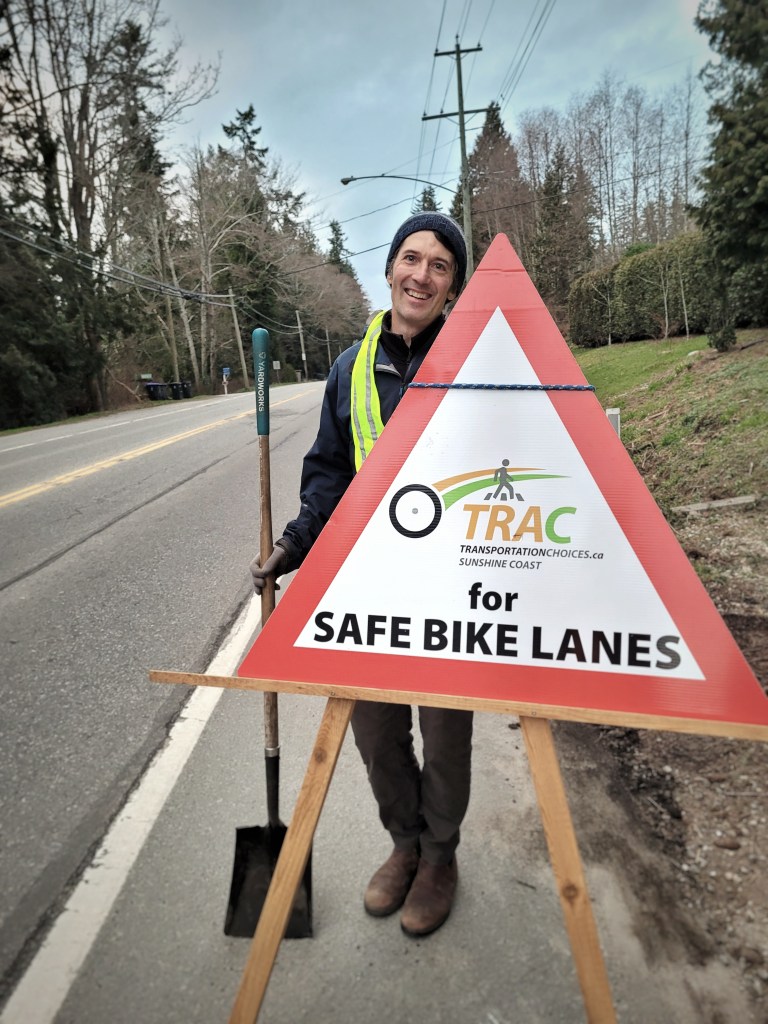
For respite from the Coast’s somewhat unique multi-jurisdictional bureaucracy, Alun can still escape to the forests where he continues to mountainbike the old-fashioned way – unassisted.
“If I’m going into the forest, that’s just recreation and I don’t feel like I need assistance, but I think it’s great that people do, if that makes it more accessible.”
Avid mountainbiker and trail-builder, Dale Sapach, counts himself as an e-bike convert. “They have a whole different fun factor to them and they make going uphill trails really quite enjoyable,” he says.
“One of my trails on Mount Elphinstone was super steep; 50 minutes full on pedal to get up there. When I started building that trail, it became obvious that I’d never finish it.”
His Specialized e-bike changed that.
“It still took me over a year to finish the trail, but regardless, that’s kind of how I got into it. I think it’s great these things exist. You can keep pushing your limits and keep riding with younger people.”
While the assist of an electric bike may make uphill trails easier, it does not necessarily make the sport less skillful, or less risky, says Dale. On the contrary: “The pros, the downhill racers know how to keep their speed through corners. You’re ultimately limited by your skill. And that potentially is an issue for some people who lose control.
“I think the biggest issue with full-power e-bikes is the weight. You require more upper body strength. When things go sideways a bit, they can go sideways a lot worse when your bike weighs 52 pounds.”
Gary Jackson agrees: “Where many people believe the e-bike is cheating, as one of the most experienced mountain bikers on the Sunshine Coast, I believe it’s much harder physically and technically to ride an electric mountainbike.
“You’re riding a bigger vehicle faster over more terrain. Because they’re more capable, I end up riding steeper terrain, higher technical climbs, aggressive technical loops, where on a pedal bike you’d have to go around to come back down. An electric bike allows you to ride fall line all day with much more elevation.”
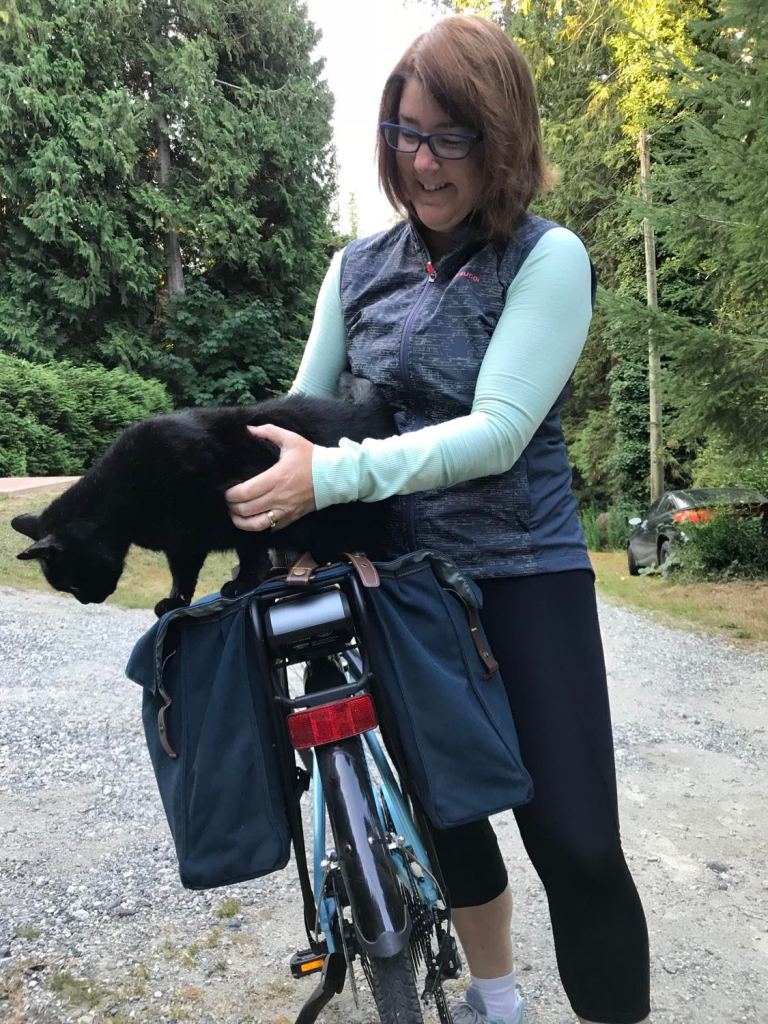
Gary owns Off The Edge Bike Shop in Sechelt. When I drop by for a quick chat, we’re still talking an hour later. He’s passionate about bike safety and dispelling what he sees as misinformation about e-bikes.
“Everybody asks, ‘how much power does it have?’ and my answer is always ‘way more than you need! You want to be talking about efficiency, weight, reliability, warranty, all that – they’ve all got lots of power.”
While it’s difficult to track the growth in popularity of e-bikes locally with any accurate measure, Off The Edge sales provide some insight. The store, a fixture for 15 years, sold its first electric bike in 2016. In 2017, it sold eight. In 2018, it sold 40 e-bikes. In 2019, it sold more than 100.
“In 2022, I’ll sell as many as I can get,” he says.
The Coast’s baby boomer demographic with its disposable income means e-bikes sell faster here, according to Gary. He recounts the experiences of older customers who thought their best cycling days were behind them. Now they’re riding to Phare Lake before breakfast, followed by the base of Mount Hallowell.
“It’s like Viagra for bikes!” he laughs. “Boomers have figured out how to not age.”
Gary sees e-bikes as not just removing hills, but also overcoming political obstacles.
“Boomers get stuff done,” he says. “Now it’s a voting entity. All the sudden, where the 60-plus crowd was not a voting demographic for the cycling community, now it is, and they’re going to have their voices heard.
“E-bikes are going to bring infrastructure. E-bikes are going to bring bike lanes. E-bikes are going to bring much needed revenue and resources into a very difficult economy. E-bikes are going to bring conscientious, enthusiastic volunteers, to help build and maintain trails. “Cyclists can learn from e-bikers and we’re lucky to have them.
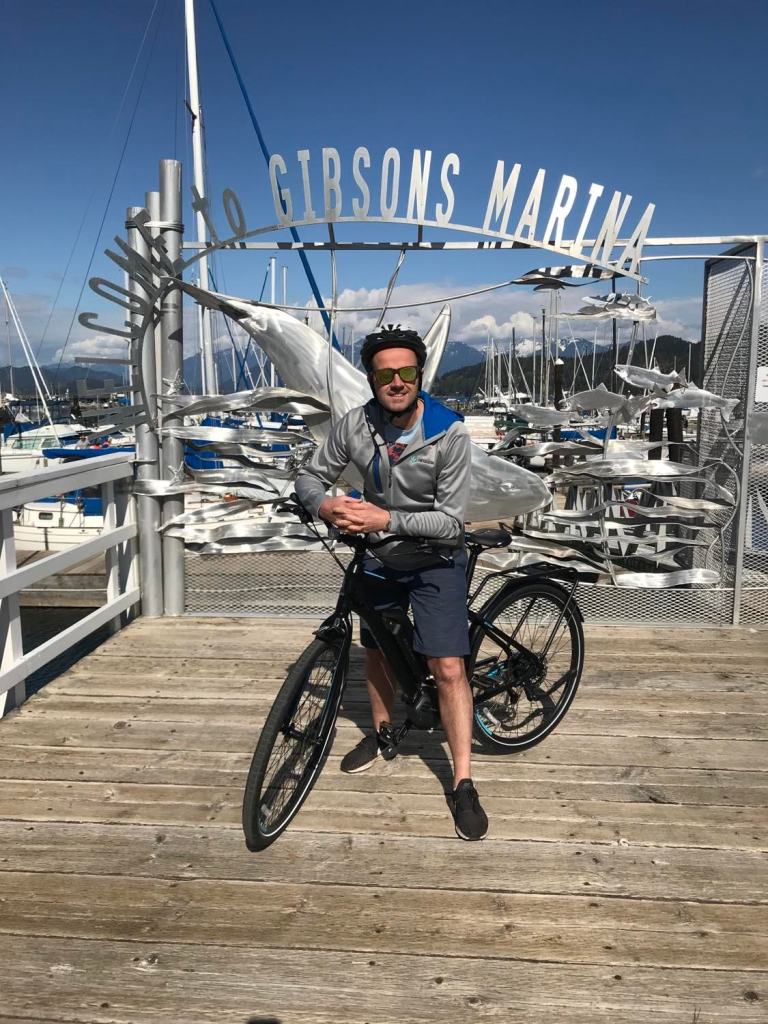
Gone with the wind
A muscular six-foot-three and weighing well over 200 pounds in his wetsuit, Stefan Benko is not easily swept off his feet. That is unless he’s afloat on a carbon-fibre board and attached at the waist by a harness and 100 feet of nylon lines to a polyester kite.
Just add wind and waves for lift-off!
“It’s just me and the elements,” says Stefan. “The beauty of being on the water is a fantastic feeling, especially here on the Sunshine Coast. I have been out in 35-40 knots, incredible winds, swells so big you get in a lower spot, you don’t see land, you’re in a bowl, and then on top you take off because the wave propels you up.”
Tacking up and down the coastline on a stormy day, kiteboarders can generate speeds in excess of 40 kilometres an hour, leaping 30 to 40 feet above the waves. Not surprisingly, there’s a learning curve to be navigated.

A south-southeast wind is gusting 15 knots on the sunny day we meet at Davis Bay. Stefan is part of a close-knit but welcoming community of kiteboarders who can often be spotted on windy days, plying the ocean waves from Langdale to West Sechelt on the Sunshine Coast, northwest of Vancouver, Canada.
Many are self-employed like Stefan, connected to each other by the messaging service, WhatsApp, and highly motivated to hit the beach when conditions are right: Davis Bay in a south-southeasterly; Bonniebrook or Wakefield in a north-northwesterly; Shoal Channel between Langdale and Granthams Landing when summer thermals are blowing; or off the mouth of Roberts Creek when a southerly wind blows over the pier.
“We are all connected to weather apps and weather change usually means wind,” says Stefan. “Sometimes though unexpectedly the wind just pops up in the morning. You have two hours and then it dies. If the wind dies, the kite doesn’t fly and I have to swim back. It can be a long swim!”
A fickle wind is just one of several potential hazards of which kiteboarders must be aware. Stefan’s preparations begin in his van where he sorts through equipment based on conditions. A harness, bar and board, boots, wetsuit, impact vest, lifejacket and a helmet if it’s particularly rough are foremost on his mental checklist.

Then there’s the choice of kite. Like boards, kites vary in material and size based on your weight, level of discipline and wind speed. Strong winds mean smaller kites – about seven square metres. Lighter winds mean bigger kites with more surface area to generate better pull.
Today, Stefan is excited to use his new, 12-square-metre foil kite, which unlike inflatable kites, generates more power and operates well in lighter winds. “It’s the Rolls Royce of kites,” he tells me as we head down to the beach. “It just wants to go up, up, up. I love it!”
At the water’s edge and now in his wetsuit and harness, Stefan unpacks his gear – all of which weighs little more than a few pounds. Connected in a bridle, the nylon lines look like a bird’s nest at first. Stefan painstakingly makes sure that lines are straight and not crossed.
Rocks and barnacles are never too far from the sand of Davis Bay and a sudden gust of wind could potentially drag and damage the kite or cross the lines. That could spell calamity if equipment malfunctions half a mile offshore. Wind can also up-end a kiteboarder before they’ve even made it into the ocean.
Stefan recalls the first time he saw kiteboarding. “It was 1997 and I was in Maui, Ho’okipa Beach, and windsurfing was at its height. On the beach is this guy. He has a surfboard in one hand and two handles and a kite in the air. He is being dragged down the beach by the wind, there was so much force.”
Stefan rushed to assist. “I held him, we walked to the edge of the water and he put his feet in the suit-board straps and off he goes. Soon he’s flying, jumping, up and down. And I go, ‘what the heck is that?’”
Stefan had helped Marcus ‘Flash’ Austin, a pioneer of the sport, later to become its world champion for many years. “I used to windsurf, snowboard, wakeboard, anything to do with boards. When I saw kiteboarding, I thought ‘this is the sport, I want to get into.’ I used to paraglide. It’s the same idea of flying and hanging off the strings and controlling the wind and the kite and being able to lift. It was a perfect combination for me to get into it.”
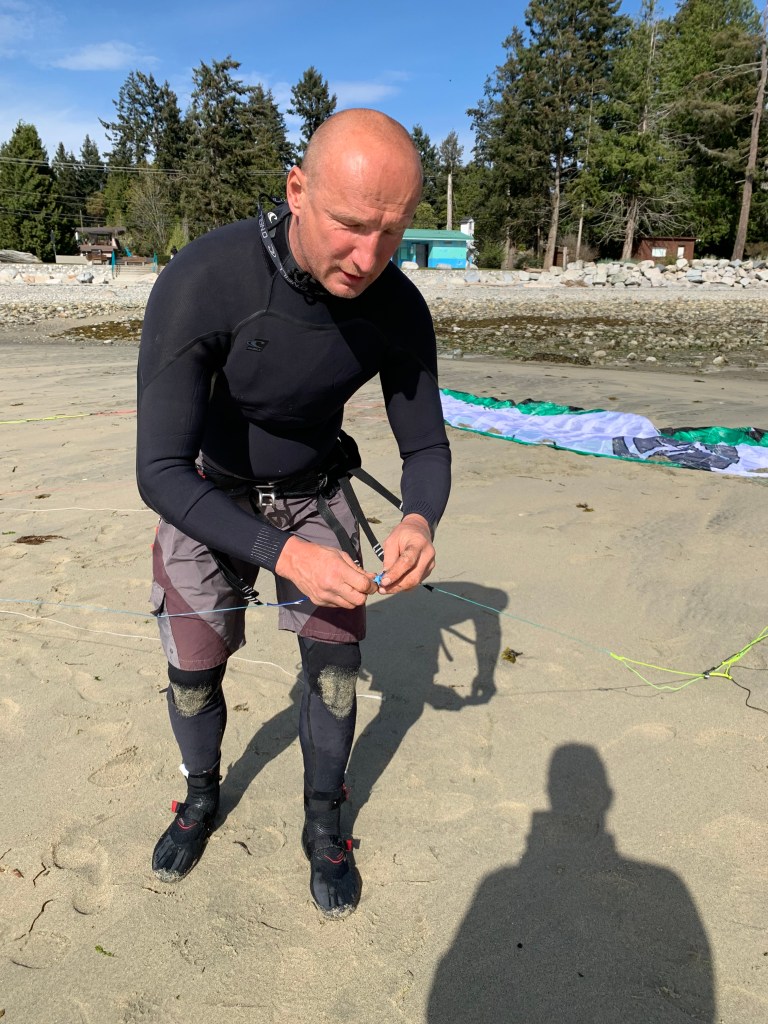
With his lines straight and his final check over, Stefan is almost ready to launch. He’s keen to emphasize to anyone considering the sport, take lessons. Kiteboarders the world over always help each other, he says, but starting off with proper instruction is essential. (Several schools run out of Squamish.)
“There are so many things that can go wrong in a split second,” he says. “A sudden gust can shatter your confidence; it can rip the kite out of your hands or you’re being dragged by the kite, out of control, face first, hurting yourself, or someone else. Learn how to fly a kite and get the sense of balance, counter-balance, the pull and learn what not to do with a kite. If it flies out of control, there’s no way back.”
Mastering the art though can reap rich rewards and not just speed and big air. “A few years ago, here I was kiteboarding feet away from a pod of orcas. Last Fall, I was in the mouth of Wilson Creek and a salmon jumps and hits me in the thigh. Really!”
“Are there any conditions you’d refuse to go out in?” I ask. After a brief pause, Stefan answers: “No wind.” We laugh and with that, he edges into the waves, the slack in the nylon lines soon stiffening as the kite extends overhead.
Seconds later, he’s skimming the whitecaps heading west, before tacking into the wind and returning towards the mouth of Chapman Creek. Reclining at a 45-degree angle, edging into the waves and gaining speed, Stefan finally takes flight, and is suspended in mid-air. Seven seconds later, he descends.
I’m almost certain he’s smiling.

Cold comfort
Cold-water plunges too good to limit to New Year’s Day
It’s a raw, rainy November afternoon when I join Sherryl, Donna, Maggie, Tara and Meaghan at Porpoise Bay. Some dog-walkers are around but it’s safe to say, we’re the only people wearing bathing suits.
At the water’s edge, Donna Shugar confides: “My husband Ken thinks he should be here; just in case I don’t return.”
“How come he’s not doing this?” I ask.
“He’s from California,” Donna replies. “He says he hasn’t been warm since he moved to Canada.”
It’s true, cold-water exposure is not for everyone. There’s nothing inviting about today’s leaden skies and grey ocean. But seconds later, in fading light, we’re in, submerged, swimming, floating and talking. I stifle the urge to pant.
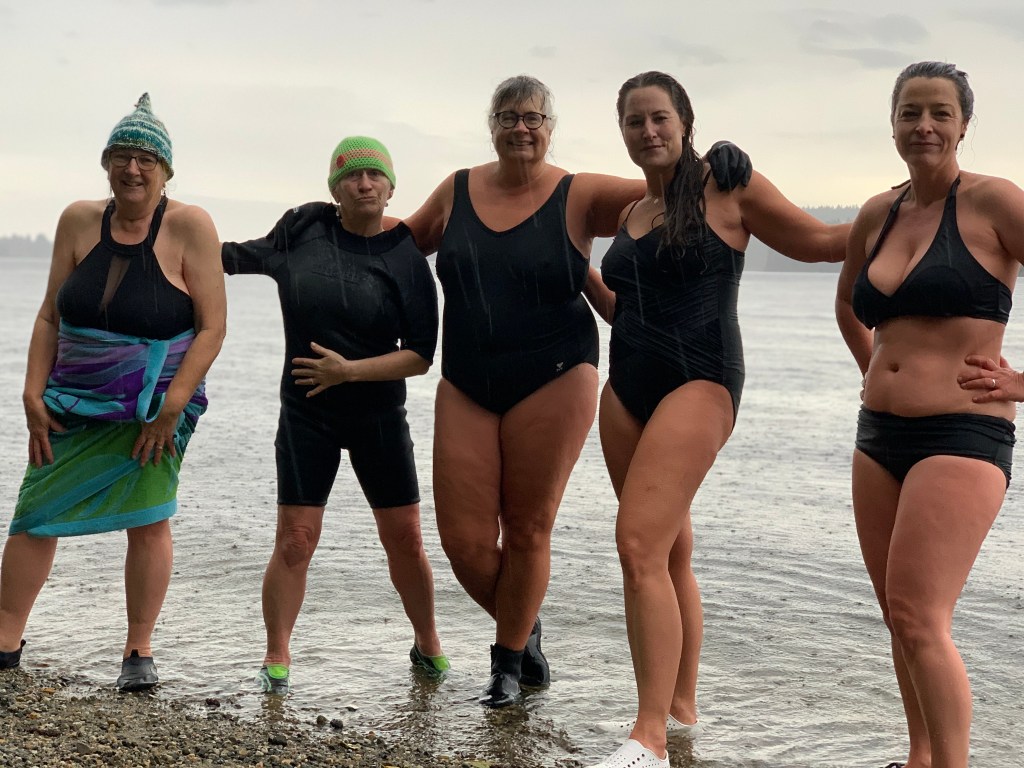
“There’s always a shock but I don’t really think about it anymore, I just do it,” says Sherryl Latimer. “I do a deep-breathing exercise for the first 30 seconds and then I am submerged, and it feels great.”
Like most of the others, Sherryl is a cold-water convert. She organized today’s swim and hopes it will become a regular event for like-minded enthusiasts. Sherryl invited Tara Swann and Meaghan O’Brien Spithoff, who swim with a group that meets multiple times a week at Henderson Beach in Roberts Creek.
For reasons as varied as the growing number of people who practice it, cold-water immersion is no longer just for New Year’s Day.
Meaghan is inspired by the contrasts between “the powerful ocean and the vulnerable human that enters it”.
“It’s breathtaking,” she says. “It feels like an internal strength develops inside you the more you swim and yet the ocean soothes you at the same time.”
Her friend Tara craves the connections made in the ocean – and not just human connections.
“I felt a little like I cheated the social isolation in the last year,” says Tara. “We come alone and meet up together. We’re distanced. Anyone is welcome and it quenches a social need while you compete only with yourself.
“Every day the water’s different, the sky is different, your body feels different. I dip my head like a daily baptism. It’s like how I imagine church to feel for others – replenishing.”
“Rejuvenating” is how Sherryl describes it. “After swimming in the cold, it feels like you’ve had a massage inside and outside your body. I have underlying heart and lung issues, and I live with depression. This just makes me feel so good. It lifts my mood and spirit. During Covid, I found the periods of depression came more often and for longer. When I swim more, the depression spells lessen.”
Sherryl keeps a detailed log of all her swims, recording weather conditions, tides and time spent in the water. Her attempts to form a weekly group are now making headway and she draws inspiration from a group in Powell River.
“I went up last spring and swam with them. It’s mostly women and 10 or 12 who swim every day. Right away you feel a camaraderie because it’s a special kind of person who does this. Now with the few women who have joined at Porpoise Bay, you have this thing in common, it’s out of the ordinary and there’s a sense of adventure.
“The overall benefit is of feeling wonderful afterwards and sharing that feeling with others.”
Storms, wind, rain and snow are no deterrent to the women, who are not about to let the weather come between them and their cold-water fix.

The stormier the better for George Vourtsis, who started a group pre-pandemic as an extension of the Gibsons-based boxing club. The group meets Sunday mornings off Franklin Road.
“Storms! That’s the best time to come out,” says George. “When it’s nasty and the wind’s blowing and the swells are up and you know you’re going in, you get a rush – it’s a good feeling.”
Another regular, Tammie Lumsden, can vouch for George’s enthusiasm. “One Sunday was super stormy, and I was standing at the edge, saying ‘I just can’t do this, there’s just no way’. And George said, ‘yes you can, you can do it’. I just got in and it was totally fine.”
Ironically, it’s a cold, calm, crystal-clear Sunday when I join the group. (Two humpback whales even make an appearance!) More than one person remarks that the weather’s actually too good. Most of the group remain immersed for at least two minutes, although one or two prefer to quickly run in and out.
When I ask why swim, I hear familiar feel-good responses of camaraderie, connection and health benefits, including better circulation, stronger immune systems and improved mental health. That word “rejuvenating” comes up again.
Simplicity also strikes a chord for Tammie.
“It’s free! You live on the Coast! I grew up next to water my whole life. Why wouldn’t you?”
Almost all the people I speak to are familiar with Wim Hof, a Dutch extreme athlete and so-called Ice Man, who has popularized specialized breathing techniques and cold therapy in books and videos. Less known to us now is Vincenz Priessnitz, who extolled the virtues of hydrotherapy more than 150 years ago. Hippocrates, considered the founder of medicine, was prescribing cold water as a curative circa 400 BC.
Science would seem to validate some of those shared but subjective feelings of exhilaration. A 2000 study published in the European Journal of Applied Physiology (“Human physiological responses to immersion in cold water of different temperatures”) found that the increase in dopamine from cold water exposure is comparable to levels recorded after taking cocaine. Dopamine is a neurotransmitter that in sufficiently high levels can lead to feelings of bliss, euphoria, greater motivation and concentration. The dopamine release triggered by cold water, unlike cocaine, is sustained, continuing to rise for up to three hours, long after exiting the water.

I’m beginning to understand why a free, legal, non-addictive, long-lasting high might be so appealing!
For all its potent stimulus though, swimming here at this time of year is not to be undertaken lightly for first-timers. Sherryl heeded her doctor’s advice of “take it slow and listen to your body” before becoming a full cold-water convert. “It’s at your own risk, learn about what you’re getting into and have someone spot for you if you’re swimming by yourself,” she adds.
I’d add that neoprene booties and gloves are pretty skookum, too!
For now, Sherryl is hopeful more people will join the group, which currently meets at Porpoise Bay Provincial Park one to two times a week. (Search “Sechelt Cold Water Swimmers” to find the group on Facebook.)
“Perhaps we’ll be doing this every day,” she says.
Hearing is believing in the kindness of strangers

Growing up in the shadow of war, Dzenana Osmanagic and Dzenita Dzemidzic made the best of childhood in the besieged Bosnian town of Goražde.
In 1995, when the Internet was still a novelty and people posted photos in albums, not on social media, Brian Sadler met Dzenita and Dzenana. He was in his early 50s, a 35-year veteran of the Canadian military and a civil affairs officer with the United Nations. Civil war was tearing apart the former Yugoslavia and Brian had just driven his rented 4×4 into Goražde, a besieged Bosnian town with no running water, no electricity, little food and a lot of bullets.
Dzenita Dzemidzic and Dzenana Osmanagic, then aged nine and 11, were among a crowd of children who gathered around Sadler’s truck, which carried a generator and six months’ worth of supplies.
“I pulled into this empty street and immediately all these kids appeared,” recalls Brian. “Through gestures, I asked them to help unload boxes of stuff. Two girls joined the queue and these Bosnian kids started waving them away, telling me that these girls couldn’t hear and couldn’t speak.
“Then I realized that the girls were being – shall we say – isolated. So, I shooed all the kids away, except for the two girls.”
The story might have ended there. Except Dzenita and Dzenana, best friends unused to being singled out so positively, told their parents of the experience. Through an interpreter, the families thanked Brian and welcomed him into their community. He now found himself accompanied most days by his two new friends, communicating with them in a rudimentary sign/body language. “The girls wouldn’t leave my side!”
After a career spent parachuting into trouble spots from the Sinai to Somalia, the highly decorated peacekeeper was entrusted with overseeing the UN protection of 60,000 Muslim residents. But Dzenita and Dzenana needed more than just protection. Brian believed they deserved the chance to hear and speak, opportunities denied them because of war.
What followed was a story that embodies the kindness of strangers and an unlikely journey to the town of Gibsons on Canada’s west coast.
Coming to Canada
Within a couple of months of that first meeting, Brian was asked by the father of one of the girls whether it might be possible to get the girls examined by doctors. Travelling 100 kilometres to Sarajevo was ruled out because of the Bosnian Serb Army that had besieged the town since 1992.
“I came up with the idea that I would try to take them to Canada and get them examined by Canadian doctors,” recalls Brian, who contacted former air force colleagues about “catching a ride” on a regular scheduled flight. “They said, ‘we’d love to but you’re going to need a sponsor because you’re a civvy [civilian] now.’”
Brian contacted the Canadian ambassador’s office in Zagreb, Croatia. “Within days he said, ‘absolutely,’ insisting I bring the girls to his office, so he could personally authorize their visas.”
On April 24, 1996, Brian with Dzenita and Dzenana – who had never set foot outside Goražde, let alone Bosnia – stepped off a 437 Squadron Polaris aircraft at CFB Trenton for a layover, before continuing their trip west.
The girls’ journey and their 36-day stay in Canada is captured in a photo album. It’s one of three copies Brian made – one each for the girls and one for himself.
“There’s a wonderful photograph of the girls on the plane,” says Brian. “It amuses me because they’re pretending to read a newspaper. They loved reading the paper and they really enjoyed taking pictures of me with my camera.”
Travelling celebrities!
Dzenita and Dzenana underwent examination by a Vancouver doctor, who confirmed the girls could be treated. Treatment duly followed in Edmonton by an audiologist who provided the girls two computer-driven hearing aids and a year’s supply of batteries each.
“After they were fitted by the audiologist, we were driving along the three of us back to my home in St. Albert in my two-seater ranger – Dzeni would sit in the middle on a lunch box. They were exclaiming with noises or excitement because they had never heard the traffic,” recalls Brian. “It was a whole new life! I had to really concentrate on driving.”
Brian and the girls became local celebrities. They were guests of honour at Edmonton City Council, which made the newspaper! While the girls were visiting a school for the deaf in Spruce Grove, AB, Dzenana developed a serious toothache requiring immediate attention. The diseased tooth was extracted the same day for free by a local dentist contacted by the school.
When Brian brought the girls to Gibsons to meet his parents, Jack and Pat, Coast Cable featured their visit in a one-hour TV special. (The girls can be seen smiling and signing with Brian while he’s interviewed in the sunshine.)
“The girls charmed their way through,” laughs Brian.
Pat Sadler was part of a prolific knitting circle that created countless balaclavas and scarves, packaged up by Jack Sadler and flown in numerous standard military shipments to help children like Dzenita and Dzenana through cold Bosnian winters.
“I give credit to all the Canadians who helped the three of us,” says Brian. “The cooperation was phenomenal. And willing cooperation. I never went to anyone and said, can you help me by doing this gratis; I asked, can you help me by doing this and this, without mentioning gratis. And everybody reacted gratis.”
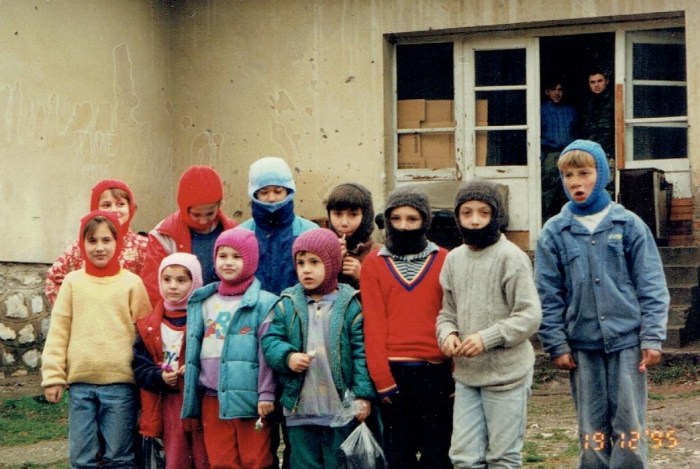
Brian’s mum, Pat and her Sunshine Coast knitting circle created countless balaclavas and scarves to help children like Dzenita and Dzenana through cold Bosnian winters.
Reconnecting
After retiring to Gibsons in 1998, Brian lost contact with Dzenita and Dzenana for 20 years. Last year, they reconnected on Facebook. Now in their 30s, both women have careers; Dzenana is married with two children. With the help of Dzenita’s English-speaking brother, Adi, they answered questions and shared their memories.
“Childhood during the war was tough,” they write. “It was scary for everyone; you can’t imagine how hard this was for two little girls.
“It was Brian who first told us we were going to Canada. We couldn’t believe it and we were actually a little bit scared. Brian told us that we were going there by plane. It was amazing for us and until the trip we were looking in the sky every day.”
Dzenita and Dzenana recalled Brian taking them to McDonald’s and also persuading them to eat pizza for the first time. (“He was begging us just to try it and we did, and we loved it!”) Bowling with new friends, trips to the cinema and meeting Brian’s parents also stand out. They still have the photo albums Brian made.
How did the experience change their lives?
“We came from a city that had no food, no water, no electricity. Here was a man who helped us; who found doctors to help us. We are very emotional when we talk about Brian and we really love him and miss him. He is true proof that kindness is a feature of great people. Brian is a great man and we will always be thankful to him.”
“The treatment helped us a lot. When Dzenita came home, we were sitting on the balcony. She said, ‘Dad, I can hear the birds.’”
Bites and bicycles in Japan
Japan is firmly in the sporting spotlight, hosting the Rugby World Cup now and the 2020 Olympic and Paralympic Games in Tokyo next summer. If you’re attending either event, chances are you’ve been busy researching travel logistics and learning some essential Japanese phrases.
After visiting the country this summer, I can safely say Japan is ready for you! The JR rail network connects every town and city quickly and on time. With a little planning, Tokyo’s metro is equally efficient. For 38 million residents, it needs to be.
In a little under two weeks, I visited Tokyo, Kobe, Kyoto, Osaka, Nara and Hiroshima. I took an internal flight from Tokyo to Osaka but otherwise rode the Shinkansen ‘Bullet’ train. If you’re planning to make more than one trip on the Shinkansen, buy the JR Rail Pass before you leave Canada to save money.
The sport might keep you busy but here are three offbeat pursuits for when you’re between rugby matches or Olympic events.

Lunch is served over several courses during Willer’s Kyoto lunch bus tour of Japan’s former capital city.
Eat and ride in Kyoto
By the time I reached Kyoto, I had walked and cycled almost 100 km through Tokyo and spent an exhausting day hiking Mount Maya in Kobe. I needed a break. Bus tours don’t normally figure on my travel radar, but a bus tour with lunch and guided commentary now had a certain appeal.
“Besides, you might meet people your own age,” my daughter Emma had suggested.
Kyoto is Japan’s former capital and still the country’s cultural centre. The open-top bus tour offered by Willer is a solid starting point to finding your bearings in a city with about 2,000 temples and shrines.
The Hassun or Kaiseki-style lunch is a multi-course platter served throughout the two and a half hours, and includes seasonal vegetables, pickles, tofu, rice and grilled fish. A cleverly designed, fixed wooden frame holds drink glasses steady, so your beer, wine or sake doesn’t spill on Kyoto’s sometimes bumpy roads.
The tour heads north from Kyoto train station, following the Kamo River and its numerous open-air restaurants. There’s little escape from the city’s summer heat and humidity but dining on terraces specially extended over the river for the season is a cooling distraction.
The area between Sanjo and Shijo is home to Pontocho Alley, which is pedestrianized and lined with traditional shops and restaurants. If you’re reading Arthur Golden’s Memoirs of a Geisha and want to capture a taste of old Asia, this is the place to return to when the tour’s over.
The tour passes the Kitano Tenmangu shrine, dedicated to the god of learning and a popular spot for local students praying for success in their exams. Kyoto is home to more than 40 institutions of higher education, so it can be busy!
Another tour stop, the Shimogamo Shrine, is one of 17 designated UNESCO World Heritage Sites in Kyoto and home to the ancient ‘ball’ game of Kemari. Every January 4, Kemari is played at the shrine, where Japanese soccer and rugby players offer their prayers for good luck. Canada’s rugby team might consider a visit before they play the All Blacks on October 2.
We stretched our legs at Togetsu-kyo bridge, crossing the Katsura River in Arashiyama on the western fringe of Kyoto. Along with numerous temples, the area is home to a bamboo grove that dwarfs visitors who walk its trails. It’s also a few degrees cooler in there.
Visit willerexpress.com for more information about Kyoto lunch and dinner tours.
Tokyo by bicycle
If you read enough Haruki Murakami novels, you’ll be acquainted with Tokyo neighbourhoods such as Roppongi, Ginza, Akasaka and Shinjuku. With every familiar name, I became more excited about finally seeing these districts in real life.
Tokyo is essentially a city of cities, home to more people than the population of Canada. Underground, the metro is efficient and affordable, if a little daunting the first time you use it. Above ground, for any hope of finding your bearings during a short stay, a bicycle tour is recommended.
Gakuto (Gaku) Miura led our group of four on a six-and-a-half-hour cycle through Tokyo ancient and modern: from the immense skyscrapers of Shinjuku and Roppongi Hills to the peace of Yoyogi Park, the Meiji Jingu Shrine and the Imperial Palace.

Cycling near Japan’s Imperial Palace in Tokyo’s Chiyoda ward during a six-and-a-half hour guided tour.
There are surprises along the way, such as suddenly finding yourself riding through Aoyama Cemetery, final resting place for about 14,000 people and a dog called Hachiko. More than 80 years after his death, Hachiko is still revered for his loyalty after returning to Tokyo’s Shibuya Station every day for nine years, waiting in vain for his master who had died at work.
After cycling through the expensive shopping district of Ginza, the Imperial Palace in Tokyo’s Chiyoda ward has the feel of New York’s Central Park to it: acres of lush green gardens abutting so many square miles of concrete. Inside the park-like setting is the main palace and private residences of Japan’s reclusive Imperial Family.
Back in Hachiko’s day, you could see Mt. Fuji from here. Today, you’d need a clear day to ascend the 48-storey Metropolitan Government Building for that view. It’s where Gaku’s tour usually ends. Sadly, the weather gods denied us a glimpse of Japan’s iconic mountain, 100 kilometres away.
Visit bicycletourstokyo.com for more information.
Making Hiroshimayaki
I’d never heard of okonomiyaki until we hosted a Japanese home-stay student, who made it for us last year. It instantly became our new favourite Japanese food. When my daughter Emma became a home-stay student in Kobe this summer, I visited her, and we resolved to visit Hiroshima to sample Hiroshimayaki, the city’s own variation on the popular dish.
Widely available throughout Japan (and a few Vancouver restaurants) but especially popular in Osaka and Hiroshima, okonomiyaki is a cross between a savoury pancake and pizza, and almost always made from shredded cabbage. (Don’t let the cabbage put you off – the taste is in the toppings!)
We signed up for a cooking class – aka the Standard Hiroshima Okonomiyaki Experience – at kitchens located near the city’s main train station. The space resembled a TV studio with bright lights and busy instructors wearing headsets and mics.
Positioned at the head of a giant griddle, around which eight students stood, our instructor Yosuke balanced instructions in Japanese and English while deftly demonstrating numerous steps. Following carefully, we each began by ladling a circle of egg-flour mix onto the griddle before piling our shredded cabbage on top. Then came the main ingredients; strips of pork followed by yakisoba noodles, scallions, a fried egg, dried squid tempura and a variety of sauces.
Using small spatulas some nifty flipping skills are required to cook your okonomiyaki evenly, but the beer served during the class only seemed to enhance our manual dexterity. And there were no complaints about the finished serving, which tasted as good as the Hiroshima-yaki we’d eaten in a restaurant the night before!
Vegetarian and Muslim-friendly options are also available, plus you’ll receive a chef’s hat and apron!
Google “Okonomiyaki Experience at Hiroshima Station” and you’ll find the English version of Otafuku’s website to book the 90-minute class.
- Visit http://ilovejapan.ca/, Japan National Tourism Association’s Canadian website, for a variety of practical travel information, including an excellent guide to the Japanese cities hosting Canada’s Rugby World Cup games.
- Kampai!
- Hiroshimayaki
- Guys at the griddle
- Shinjuku girls
- Quiet in Kabukicho
- Making friends in Hiroshima
Slow train to Winnipeg
There is no fast train to Winnipeg. VIA Rail’s meandering service from Vancouver to Winnipeg fits a country that’s meant to be savoured. Yes, you could fly in under three hours, but if you’re looking for a more immersive experience and can spare three days, take the train. It’s not meant to be fast.
Leah and I checked in at Pacific Central Station in Vancouver on a sunny, Friday morning in late July. The forest fires that shrouded most of western Canada were still two weeks away and clear skies beckoned. Friends had been surprised to learn of a rail connection. Almost as surprised as by our destination. True, Winnipeg’s not the first place you think of for a summer holiday, but we live on the Sunshine Coast. A break from tourists would be good for the soul.
Our noon departure left 15 minutes late, but few passengers seemed to notice. Most people were busy exploring their new home for the next two nights; four nights for Toronto-bound passengers.
A large American tour party, each traveller wearing a name badge, patrolled the corridors for the first hour, marvelling at the cleverly concealed shower closets, the premium-class cabins and the viewing cars. With 72 hours ahead of us, we decided to pace ourselves, watching East Vancouver, Burnaby, and New Westminster pass us by before venturing from our seats.
VIA Rail trains come in three classes and various carriage designations. The best views are to be had in the Skyline cars with their scenic dome sections, and the Panorama car, which features windows to the ceiling. The Park car in the caboose is an elegant throwback to bygone lounge luxury and is limited to the train’s Prestige passengers at certain times of the day.
Prestige is the priciest of VIA’s three travelling classes, offering private sleeping quarters and a personal concierge. We travelled in Sleeper Plus, which saw our seats being transformed by a carriage attendant at night into comfy bunk beds shrouded behind a thick curtain. (The attendant reverses the process in the morning while you’re at breakfast.) For Economy Class, picture your seat becoming a La-Z-Boy with pillow and blanket. All meals are included in the price for Prestige and Sleeper Plus.
An excellent three-course lunch, including a sautéed prawn and scallop salad, set the tone for our meals ahead. Duck, rack of lamb, and beef wellington were among the hot, fresh dinners somehow served from a tiny kitchen, which also offered vegetarian options for every dining course. Canadian wines and craft beer choices from Toronto, Winnipeg and Vancouver, were a nice surprise too. We soon got to know our Winnipeg-based crew, who were proud of their hometown and quick with recommendations.
Meal times presented a chance to meet fellow passengers – mostly American visitors, including one woman from San Francisco who had been suffering Trump-induced anxiety attacks. “Two days with no news has done me the world of good,” she confided.
There were other little surprises along the way. Complimentary mimosas went down well on Saturday morning while stuck for an hour outside of Jasper. Informal wine tasting with one of the crew in the dome car eased us through the Saskatchewan-Manitoba border. Lounge car patrons were entertained by a classical guitarist in an afternoon performance.
The real star of the show though was the view, otherwise known as Canada. First criss-crossing the Fraser River and then the Thompson, the train follows a route largely uncharted by the highway. At dinner on Friday night, heads swivelled to see a series of attractions appearing on or by the Thompson: a solitary eagle, a herd of elk, an abandoned church and a forgotten Chevy truck, circa 1960, all punctuated the dry beige canvas of thirsty cottonwoods and parched underbrush.
Sun set to be replaced by a full, blood moon. It cast its spell on us as we settled into our bunks and watched it rise, glowing red and irresistible over Kamloops Lake. I fell asleep realizing that after almost 12 hours on the train, I had yet to crack a book or suggest a game of Yahtzee with Leah.
VIA Rail’s not quiet. There were times during the night that I thought a crash was imminent, such was the screeching on the rails. “You’ve got all day to nap,” I told myself as I opened the blind to see daybreak in the Rockies. Our attendant told us we’d made good time overnight, getting up to 80 kilometres an hour, which might have explained the noise.
The American tour party alighted at Jasper where the remaining passengers had a couple of hours to explore. In minutes we were walking Jasper’s Discovery Trail, heading towards Old Fort Point. At the first viewpoint overlooking the city, a menacing gang of Bighorn Sheep blocked our path. We hesitated for 10 minutes, taking photos from a distance. The sheep looked less menacing when a jogger breezed right by them.
It took all day to reach Edmonton. Numerous stops for freight traffic, (which have priority) including a two-hour standstill, put us in at 7 p.m., a few hours behind schedule. We disembarked to skip rope a while on the platform (three solid meals a day and a sedentary lifestyle take their toll) and take photos of the City of Champions in the distance. By 8 a.m. the next morning after a better night’s sleep, we’d caught up an hour or two and were in Saskatoon for another 20-minute stroll on the platform.
Our final day of gazing out of the window introduced us to place names that seemed to herald a story: Punnichy, Ituna, Spy Hill and Atwater – population 30. Potash mines are the only hills on the Prairies, looming on the horizon occasionally like elongated pyramids. The old, wooden grain silos, so iconic to this region, seemed harder to find. Kelliher, Saskatchewan produced a nice one though.
Our last stop before Winnipeg was Melville, Sask., home of the Melville Millionaires junior hockey team and named after Grand Trunk Railway president, Charles Melville Hays, who died on the Titanic. We rolled into Winnipeg at 8.40 p.m., 90 minutes late but still warm and sunny outside.
We never did play Yahtzee!
- Classy caboose
- Bunk with a view
- Athabasca River, Jasper
- Grain silos
- Saskatoon baby!
- Derek missing the rains down in Africa
- Derek – first gorilla in Melville, Sask.
- Sunset near Edmonton
- Derek reflects on his time in Jasper
Get up, stand up!

With ocean and an abundance of lakes and tidal rapids, stand-up paddleboarders are spoiled for choice on the Sunshine Coast. Photo by Alpha Adventures
One evening last year, Jamie Mani was driving home late after coaching at Chatelech Secondary, where he teaches. Awed by the beautiful sunset at Davis Bay, he instinctively pulled over to inflate his stand-up paddleboard. A few minutes later, he was plying the calm ocean with just the setting sun and a rising full moon for company: alone, or so he thought.
“This whale appears,” recalls Mani. “So, it was just me, a whale, the sunset and a full moon!”
Whether on an inflatable or a hard version, a stand-up paddleboard, or SUP as it’s commonly known, offers a variety of escapes depending on your location. On the Sunshine Coast that could mean a peaceful, flatwater glide on Trout Lake; a touring adventure up Sechelt inlet on boards equipped with dry-bags full of gear under deck-line bungees; or an ocean jaunt to Keats Island or Pasley Island off Gibsons. For experienced SUP boarders, there’s world-class surfing at the Skookumchuk near Egmont.
“We’re so lucky on the Sunshine Coast, we have access to so many styles and bodies of water – coves, lakes, inlets, open strait, wave, no-wave,” says Mani. “And on any given day, if you’re willing to travel, you’re probably going to find calm water.”
Mani runs the Wilson Creek-based outdoor adventure store, Alpha Adventures, and was among the first group of instructors to be certified to teach SUP by Paddle Canada. He introduced SUP to the Sunshine Coast through Alpha shortly after trying it while on vacation in Hawaii.
“It was early to mid 2000s and in Hawaii, SUP was already taking off. I rented a board and loved the experience. Having been a kayak guide for decades, I do love paddling. But paddle-boarding is a completely different interaction with the water. I could go surfing on it. But I could also just look down at a reef, see turtles, see fish, check out the sunset. There the visibility is so good, it was almost like I was snorkelling, but standing up.”
An avid old-school surfer, Mani quickly realized another SUP advantage.
“I’d always liked surfing so when I saw those other surfers on SUPs, I thought: ‘It looks so easy because they’re out of the water, and they are able to catch waves, and they are always back out in the lineup way faster than any of us.
“That was kind of my second epiphany; this is amazing and I’m getting older, so this is easier, so it was a natural. Whether or not it was going to work for the business, we knew it was going to be part of our lives. We were hooked.”
During the mid-2000s, as the boards began to appear in adventure stores like Alpha, many viewed SUP as a craze, sure to be short-lived.
“One of our customers, who’s actually a teaching colleague, said to me: ‘Is this going to be the Crocs of watersports?’ I can almost remember the day he came in seven years later, and he said: “I was wrong. I’d like to know more about buying a board.
“We’ve always had a strong instructional component in our business, our foundation is on teaching and lessons. We really worked hard at getting people out on the water and realizing, we don’t live in a high surf area, so you can paddle in flat water conditions, sheltered coves, lots of lakes, calm days in open water like Davis Bay.
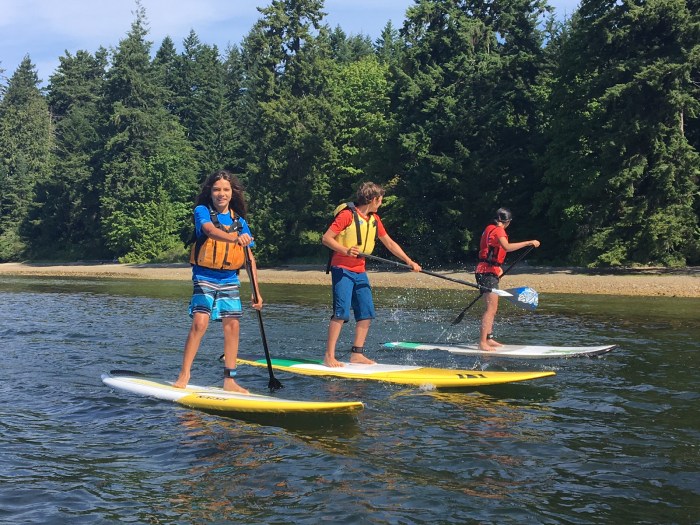
Alpha Adventures rents and sells boards, runs lessons, and hosts Summer SUP nights. Alpha Adventures photo
“It took a little while for people to realize, I can find a use for this where I live here on the Sunshine Coast.”
Board designs have changed a lot from the 12-foot behemoths that launched the sport. For surfing, SUPs are becoming shorter with more rocker (a more dramatic curve in the board upward from nose to tail) allowing quicker turns. Hybrid SUPs are good for calm, sunset paddles or small waves at the beach. Boards are increasingly tailored to weight and body size, says Mani, with children a growing demographic. There are even highly stable SUPs for anglers!
For the extra-adventurous, there’s foil boarding, which incorporates a hydrofoil beneath the board to elevate it and create the experience of levitating across the waves. “It’s just jazzy, you’re flying!” says Mani, who is bringing a foil board to the store.
What hasn’t changed about SUP is the benefit of instruction and the need for safety.
“I see people out paddleboarding, and there’s no personal flotation device (PFD) on their vessel or on their body. They don’t have a leash, and they’re definitely not prepared to fall in the water.”
Alpha’s SUP lessons spend about 20 minutes on land discussing the board, stance, style, and safety.
“The lesson philosophy is that it’s a whole paddling experience. It’s not just ‘hey, this is a board, here’s how to paddle.’ We look at safety considerations, the weather, immersion gear.”
That way, everyone is prepared, says Mani. Perhaps for a whale, even!
- Alpha Adventures rents and sells boards, offers lessons and hosts Summer SUP nights. Visit outdooradventurestore.ca
Going downhill. Fast!
“Tobogganing, which has sprung into such sudden popularity, is only a form of coasting. There is no more exciting and exhilarating sport for ladies and gentlemen than this on a clear, cold winter evening.”
- Modern Manners and Social Forms: A Manual of the Manners and Customs of the Best Modern Society, James Bethuel Smiley, 1890
Even down at sea level and despite its name, the Sunshine Coast is no stranger to snow. Anyone who has grown up here can attest to cold snaps and snow days. Despite claiming to be 29, my mum-in-law Mary Vandeberg recalls the winter of 1954 vividly.
“We spent a lot time tobogganing down Davis Bay hill that winter,” says Mary. “We had spotters, but there really wasn’t much traffic to speak of in those days. And if there was, it wasn’t getting up that hill.”
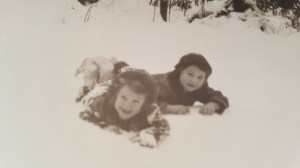
Trouble with a capital T, Mary Vandeberg with her sister Gail somewhere on a road near Davis Bay, circa 1954.
For Mary’s daughter, my wife Leah, tobogganing the road down from Chatelech Secondary, was the ultimate way to celebrate a snow day.
Even in the snowiest winters of recent years, it’s difficult to image tobogganing Highway 101 from Selma Park down to Davis Bay, as Mary describes. But that doesn’t mean there aren’t plenty of other popular places to slide.
Located 14-km up the forest service road at the end of Field Road in Wilson Creek, Dakota Ridge is one of the few, if not the only sanctioned sliding area on the Sunshine Coast. Created in 2013, the sliding area has become a popular addition to the winter recreation venue, accounting for 30 percent of total traffic, according to the Sunshine Coast Regional District.
Especially popular with young families, the groomed hill is right behind a Quonset warming hut, which is equipped with a wood stove and picnic tables. If you’re craving some off-piste thrills, there’s a long, gentle clearing off Balsam Loop on Dakota Ridge’s eastern slope that’s perfect for building bumps and jumps.
Local Cavin Crawford, who’s helped plow access roads to Dakota Ridge and the Tetrahedron for years, recommends a 200-metre slope at the eight-kilometre mark of the forestry road, near the turnoff for Dakota Bowl.
“You can drive up around the corner, let the kids out and drive down and pick them up,” says Cavin. “But please, do not toboggan on the road.”
Winter tires and chains are essential, if you’re planning to drive to Dakota Ridge; or catch the scheduled shuttle with Wilson Creek-based Alpha Adventures.
Closer to sea level, school fields are popular with the younger crowd. “The slope behind Gibsons elementary is good for younger kids and pretty good for building jumps,” says 12-year-old Kaishan Nonacowie. There’s also a gentle slope behind Elphinstone Secondary.
Flume Beach Park at the junction of Flume Road and Beach Avenue in Roberts Creek might be the closest you’ll get to sledding on the shoreline. It was a favourite spot when my kids were growing up and offers the added advantage of a scenic picnic area, plus the option of building a beach fire to warm up by.
A poll of friends and family on Facebook elicited numerous favourite spots and a theme quickly developed: roads seem to be where it’s at. Some short, some steep, and most dead-ends. (My son suggested School Road in Gibsons, which might have been feasible in 1917-18, but not 2017-18.) While there’s room for discretion on secluded roads in particularly heavy snowfalls, as a rule, cars and toboggans don’t mix, especially for emergency services, highway maintenance contractors, and stranded residents.
Back in the 1970s, it was a different story, according to life-long Coast resident, Warren Hansen.
“My favourite hill was Benner Road, in Selma Park,” recalls Warren. “Back then, there was no such things as immediate plowing. People had to park on the highway in Selma Park and walk up to their homes. For at least a couple of days, kids could slide down Benner Road, or the top of Snodgrass and Chartwell, or the top of Radcliffe Road. Every kid from miles around would converge on this location.
“I remember a bunch of us piled on a toboggan racing other toboggans down the hill. We knew that once we passed a certain driveway it was time to bail otherwise we would blow the corner and get hurt. And most kids did get hurt from getting run into, going into the ditch, or bailing off the sled sliding at breakneck speeds.”
Hansen acknowledges those days are over, but has mixed feelings.
“The plows, climate change and over-sensitive parents ruined the great sliding opportunities on Benner Road, which hasn’t been the same since those days. Then again, it could be because I grew up and know now that I would never let my kids slide on Benner Road.”
Wherever you end up sliding this winter, keep a few precautions in mind. BC Children’s Hospital recommends that young ones wear a ski, hockey, or bike helmet for tobogganing. Make sure your kids know how to control their speed and stop properly. Choose a slope away from roads and free from obstacles, such as rocks, trees, and fences. Never ride on a sled that is being pulled by anything motorized.
Bundle up, stay safe, and enjoy the snow!


